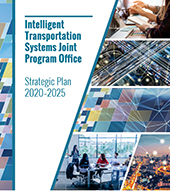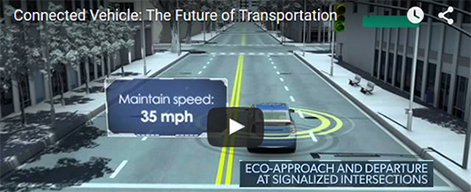News & Information
Mobility Services for All Americans (MSAA)
Introduction
Many Americans have difficulty accessing some of their basic needs, particularly seniors, persons with disabilities and the economically disadvantaged, because they must rely on human service transportation systems which are often fragmented, unreliable and inefficiently operated. Lack of coordination is the leading obstacle to meeting the mobility needs of the people who need the services most. Initiated by the U.S. Department of Transportation (U.S. DOT), the Mobility Services for All Americans (MSAA) initiative aims to improve transportation services and access to employment, healthcare, education and other community activities through a coordinated effort enabled by various Intelligent Transportation Systems (ITS) technologies and applications. MSAA is a major research area of the Research and Innovative Technology Administration (RITA) Intelligent Transportation Systems (ITS) Joint Program Office.
The Transportation Problem
Currently, due to inefficiencies, limited resources, and a lack of coordination, delivery of human service transportation is challenging. In many locations, human service transportation is fragmented, resulting in service area gaps (geographical areas where service is not provided) or limited service coverage due to an absence in trip transfers between transportation providers. Often, customers have to contact multiple case workers for multiple funding programs, trip requests have to be made well in advance, scheduled trip times are inconvenient, pick-up wait times are long and difficult to estimate, trip travel times are long, and accessibility to transit for seniors and persons with disabilities is limited. There are more than 60 federal programs that fund transportation services for the transportation disadvantaged.
The Mobility Services for All Americans initiative was built upon several past and current U.S. DOT-led activities, including the U.S. DOT’s United We Ride Program, to increase mobility and accessibility for the transportation disadvantaged and the general public, and achieve more efficient use of federal transportation funding resources through technology integration and service coordination. The MSAA program began in 2005 and implemented the Executive Order on Human Service Transportation Coordination (#13330) issued by President George W. Bush in February 2004.
The ITS Opportunity
New capabilities and opportunities are being created in both the transportation and health and human services communities through the use of emerging technologies and innovative practices. However, the two communities are often unaware of the research, new approaches, and advances that each is making, and neither may have direct communication with the transportation disadvantaged community at large.
Travel Management Coordination Center
The key to effective and efficient coordination is integrating ITS technologies into a physical or virtual Travel Management Coordination Center (TMCC) that networks all parties together and uses ITS technologies that are tested and proven and have demonstrated significant benefits and return on investment, including:
- Fleet scheduling, dispatching, and routing systems;
- Integrated fare payment and management (payment, collection, and processing) systems;
- Better traveler information and trip planning systems, particularly for customers with accessibility challenges; and
- Advanced geographic information system and demand-response systems to provide door-to-door service.
A successful TMCC provides benefits to:
- Customers with simplified access to unified travel support services-one call via any technology to arrange for transportation services.
- Human service agencies with the ability to coordinate transportation needs across service providers and modes, considering fare structures extending customer service across wider geographic areas.
Transportation Providers with a method for matching schedules and capacity with requests; an ability to efficiently process financial transactions; an opportunity to eliminate redundancies; and tools to ensure security and customer eligibility to use the system.
Research Plan
Embracing the notions of inter-agency coordination and cooperation and technology integration, the MSAA initiative adopted a five-phase approach with embedded decision points in its plan. Calibrated to advance the quality and efficiency of human service transportation delivery, the five research plan phases were:
- Phase 1: Coalition building which began in September 2004.
- Phase 2: Foundation research
- Phase 3: Planning and design of ITS-enhanced human service transportation models
- Phase 4: Deployment of ITS-enhanced human service transportation models
- Phase 5: Documentation and outreach.
Research Findings and Important Results
The MSAA Initiative has developed eight innovative approaches to coordinating and delivering human service transportation. In developing TMCC concepts of operations and system designs, the sites identified the following key lessons learned. :
- The major area of emphasis for all sites was customer service. All sites envisioned a system that provides an easy means (e.g., one-stop) for customers to get information about the transportation services available to them.
- Six of the eight sites felt that the TMCC gave them the ability to serve more clients.
- Two sites specifically focused on expanded service to provide better transportation to jobs for those who need it.
- The operational benefits of the TMCC were the second major area of emphasis. Most sites expect to realize efficiencies through, for example, elimination of duplication in paperwork or services. Themes of centralization and coordination were apparent in the responses of sites in terms of enhanced service delivery or unified billing. One site specifically said it expected a reduction in costs.
- Four sites emphasized the role of the providers, expecting the TMCC to enable more providers, especially small operators, to be involved in human services transportation.
- One site considered coordinated services as a key component for emergency evacuations.
- All sites saw the TMCC as a means for taking a regional or inter-county approach to coordinating transportation.
- The process of engaging local stakeholders in the TMCC system design has generated a higher degree of awareness of ITS within the human services field and has generated some early efficiencies in the delivery of transportation services.
The MSAA Initiative has provided a platform that has effectively raised stakeholder awareness and excitement about the human service transportation coordination opportunities.
- Project site meetings attract active participation from State and local government decision-makers, transportation operators, human service agencies, and clients.
- Elected officials are attending meetings and offering their support to the MSAA teams.
- Industry vendors actively participate and contribute their expertise.
- Federal Interagency United We Ride
- Integrated Corridor Management Systems
- Federal Transit Administration
- U.S. Department of Health and Human Services
- National Transit Institute
- ITS as an enabler to facilitate coordination and enhance accessibility
To learn more about the MSAA program, contact:
Robert Sheehan
Program Manager
Multimodal ITS Research and Deployment
(202) 366-6817
robert.sheehan@dot.gov










